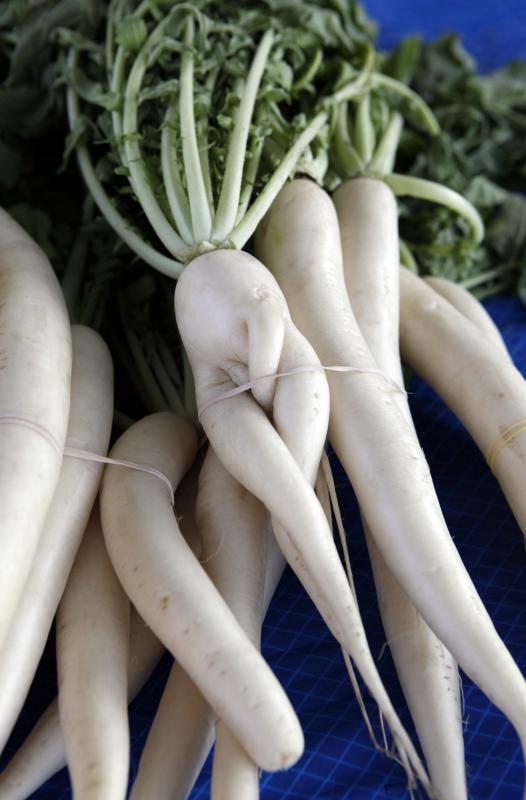At WiseGEEK, we're committed to delivering accurate, trustworthy information. Our expert-authored content is rigorously fact-checked and sourced from credible authorities. Discover how we uphold the highest standards in providing you with reliable knowledge.
What Are the Best Tips for Making Pickled Daikon?
There are a number of different ways to prepare pickled daikon, so the best tips can depend on the desired results. One traditional method of preparing pickled daikon involves first drying the radishes with the leaves still attached. If this method is used, then, after drying, the leaves should be cut off and put on the top of the pickling mixture before the container is sealed. In order to make a crisper pickled daikon, fresh radishes can be used instead of dried ones. The crispness and flavor can also be customized by altering the way the radishes are cut.
Daikon radishes, which are also known as white radishes, mooli, and lo bok, are a variety of radish from East Asia. There are many different types of daikon radishes, some of which are white all the way through, and others that have a pale green color. Any type of daikon can be pickled, though the large, mildly-flavored, aokubi-daikon from Japan is one popular choice. These radishes look like very large, white carrots, and there are a number of different ways that they can be pickled.

One of the most traditional methods of pickling daikon radishes is to first allow them to dry out. The most important tip associated with this method is to not remove the leaves until after the drying process is over. Daikon radishes can be left outside during this process, but must be taken inside if it rains or there is any chance of morning dew. If the radishes can be left in an area where they will be subjected to a dry breeze, that can also be helpful.

The easiest way to know when the radishes are ready for pickling is by how easily they bend, and they should be quite flexible before they are placed into a pickling mixture. In order to get the best results from this traditional method, the leaves should be cut off prior to pickling. After the radishes have been placed into the pickling container, the leaves can be added and then covered in salt.
In order to make a version of pickled daikon that is more crisp, there are a number of other tips that can be followed. Fresh daikon can be sliced up and placed directly into a pickling mixture, which will typically result in a crisper product. Thicker slices will typically be crisper as well, and thinner slices will end up with a stronger flavor. Before the slices are pickled, they should first be put in a colander and mixed together with some salt. That will typically result in the crispest pickled daikon possible.
AS FEATURED ON:
AS FEATURED ON:












Discuss this Article
Post your comments